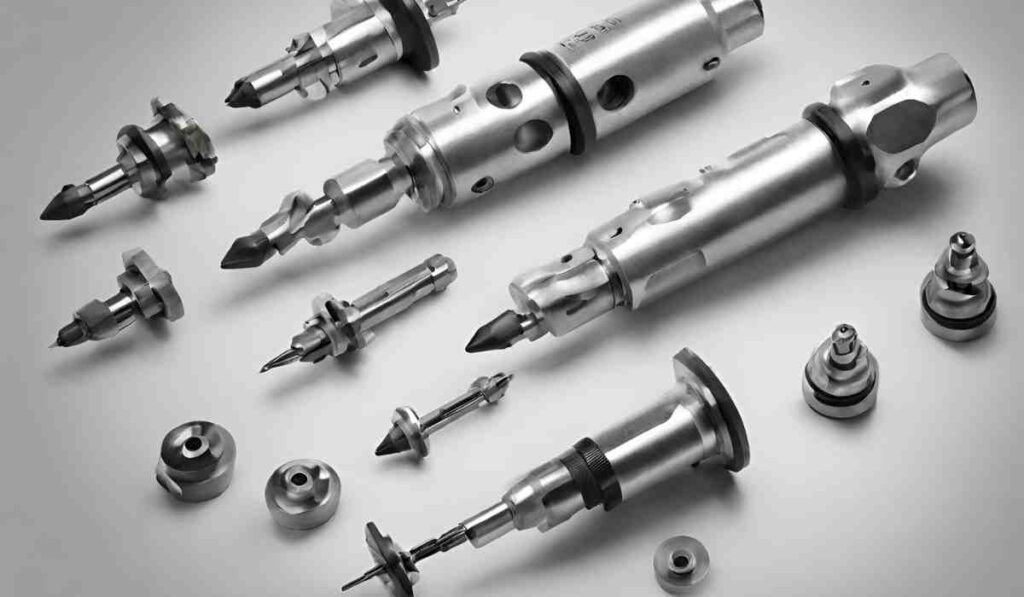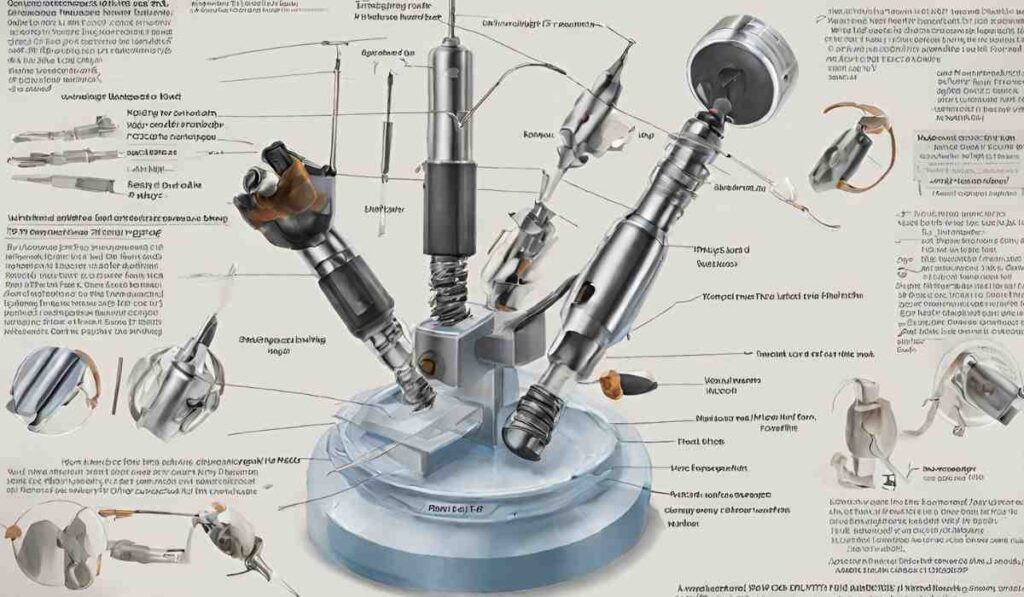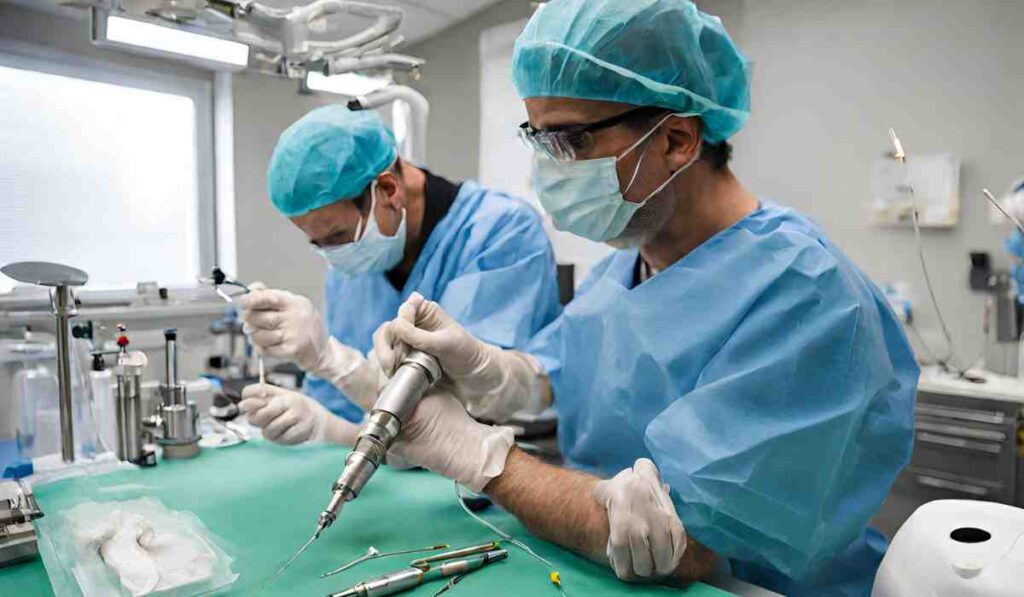In the intricate world of surgical procedures, precision is paramount. Among the array of tools at a surgeon’s disposal, one stands out for its ability to navigate delicate surgeries with unparalleled accuracy – the trephine drill.
In this comprehensive guide, we’ll delve into the intricacies of trephine drills, uncover their features and applications, and explore how they empower surgeons to achieve exceptional results in various surgical interventions.
Understanding Trephine Drills
At the core of many surgical procedures lies the trephine drill – a specialized instrument designed for precise bone cutting and material removal.
Unlike conventional drills, trephines offer unparalleled control and accuracy, making them indispensable tools in the hands of skilled surgeons.
With their slender shafts, sharp cutting edges, and ergonomic designs, trephine drills excel in navigating tight spaces and delicate tissues, allowing surgeons to perform intricate procedures with confidence and precision.
Features and Specifications of Trephine Drills

Trephine drills come in a variety of shapes and sizes, each tailored to meet the demands of specific surgical interventions.
With shaft diameters ranging from 1.5mm to 3.0mm and lengths varying from 20mm to 50mm, these instruments offer versatility and adaptability in a wide range of surgical settings.
Made from high-quality materials such as stainless steel and titanium, trephine drills ensure durability and reliability in even the most demanding surgical procedures.
Applications of Trephine Drills

The applications of trephine drills are as diverse as the surgical specialties they serve. In dentistry, trephine drills are used for implantology procedures, facilitating precise bone cutting and material removal during implant placement and removal.
In neurosurgery, trephine drills play a crucial role in craniotomies and stereotactic biopsies, enabling surgeons to access and manipulate delicate brain tissue with unparalleled accuracy.
In orthopedic surgery, trephine drills are employed for bone grafting, osteotomy procedures, and joint arthroplasties, facilitating the reconstruction and stabilization of damaged skeletal structures.
Safety Considerations and Best Practices

While trephine drills offer unparalleled precision and control in surgical procedures, safety considerations must always remain paramount.
Proper patient positioning, meticulous surgical technique, and adherence to established protocols are essential for minimizing complications and maximizing outcomes.
Surgeons should undergo comprehensive training and continuing education to ensure proficiency in the use of trephine drills and other surgical instruments.
Close collaboration between surgical teams, anesthesia providers, and support staff is crucial for ensuring patient safety and satisfaction.
Future Directions in Trephine Drill Technology
As technology continues to advance, so too will the field of trephine drill technology. Advancements in materials science, manufacturing techniques, and surgical navigation systems promise to revolutionize the way surgeons approach complex procedures, offering unprecedented levels of precision, accuracy, and efficiency.
From minimally invasive techniques to personalized medicine approaches, the future of trephine drills holds boundless potential for improving patient outcomes and advancing the frontiers of surgical innovation.
Conclusion
In the quest for surgical excellence, precision is not merely a goal – it is a necessity. Trephine drills, with their precision-engineered designs and versatile applications, are indispensable tools in the hands of skilled practitioners, enabling them to achieve optimal outcomes and deliver exceptional care to their patients.
By embracing the principles of precision, innovation, and collaboration, surgeons can unlock new possibilities in surgical interventions and chart a course toward a future of safer, more effective patient care.
FAQs
What does a trephine remove?
- A trephine removes bone tissue or other materials, such as dental implants or grafts, with precision and control during surgical procedures.
What is a trephine bur used for?
- A trephine bur, similar to a trephine drill, is used for precise bone cutting and material removal in surgical interventions, particularly in dentistry and orthopedics.
What speed is a trephine drill?
- Trephine drills are typically operated at low to medium speeds, ranging from 500 to 1500 revolutions per minute (RPM), depending on the specific surgical procedure and surgeon preference.
What is a trephine drill?
- A trephine drill is a specialized surgical instrument designed for precise bone cutting and material removal in various surgical procedures.
How does a trephine drill differ from a conventional drill?
- Unlike conventional drills, trephine drills offer unparalleled control and accuracy, making them ideal for navigating tight spaces and delicate tissues in surgical interventions.
What are the primary applications of trephine drills?
- Trephine drills are commonly used in dentistry for implantology procedures, neurosurgery for craniotomies, and orthopedic surgery for bone grafting and joint arthroplasties.
Are trephine drills compatible with all surgical settings?
- Yes, trephine drills are versatile instruments suitable for use in a wide range of surgical specialties, including dentistry, neurosurgery, orthopedics, and more.
What materials are trephine drills typically made from?
- Trephine drills are commonly made from high-quality materials such as stainless steel and titanium, ensuring durability and reliability in surgical procedures.
Are there different sizes of trephine drills available?
- Yes, trephine drills come in a variety of sizes, with shaft diameters ranging from 1.5mm to 3.0mm and lengths varying from 20mm to 50mm to accommodate different surgical needs.
How should trephine drills be sterilized before use?
- Trephine drills should be sterilized using autoclave sterilization methods to ensure they are free from contaminants and safe for surgical procedures.
What precautions should be taken when using trephine drills?
- Surgeons should exercise caution to avoid damaging surrounding tissues and structures when using trephine drills, and adhere to established safety protocols to minimize risks.
Can trephine drills be used in minimally invasive surgeries?
- Yes, trephine drills are versatile instruments that can be used in both traditional and minimally invasive surgical approaches, depending on the specific procedure and surgeon preference.
Where can I find more information about trephine drills and their applications?
- For more information about trephine drills and their applications, consult with experienced surgeons, refer to medical literature, or reach out to reputable surgical instrument manufacturers for guidance.
Also Read
Cotton Drill: Crafting Comfort With Precision









